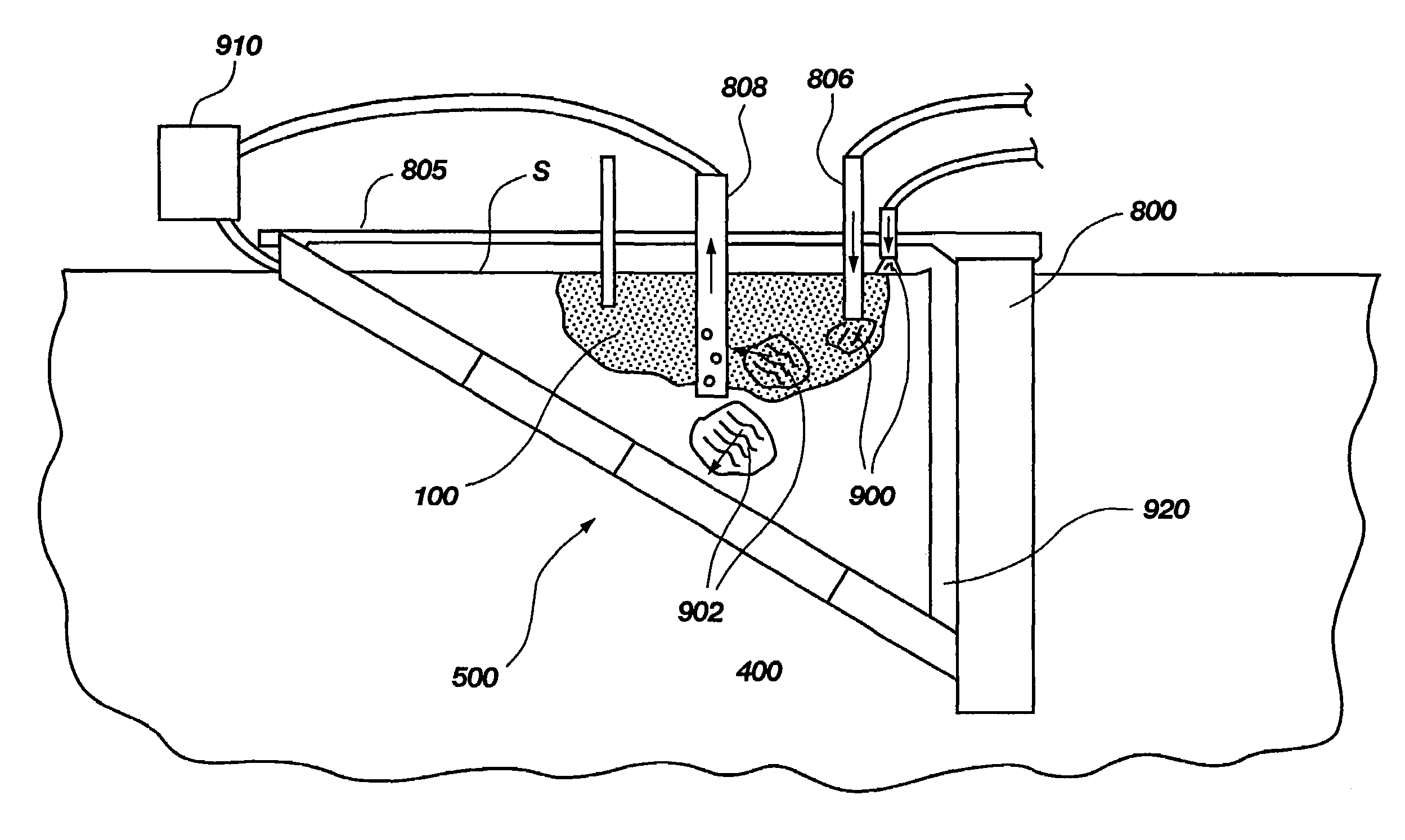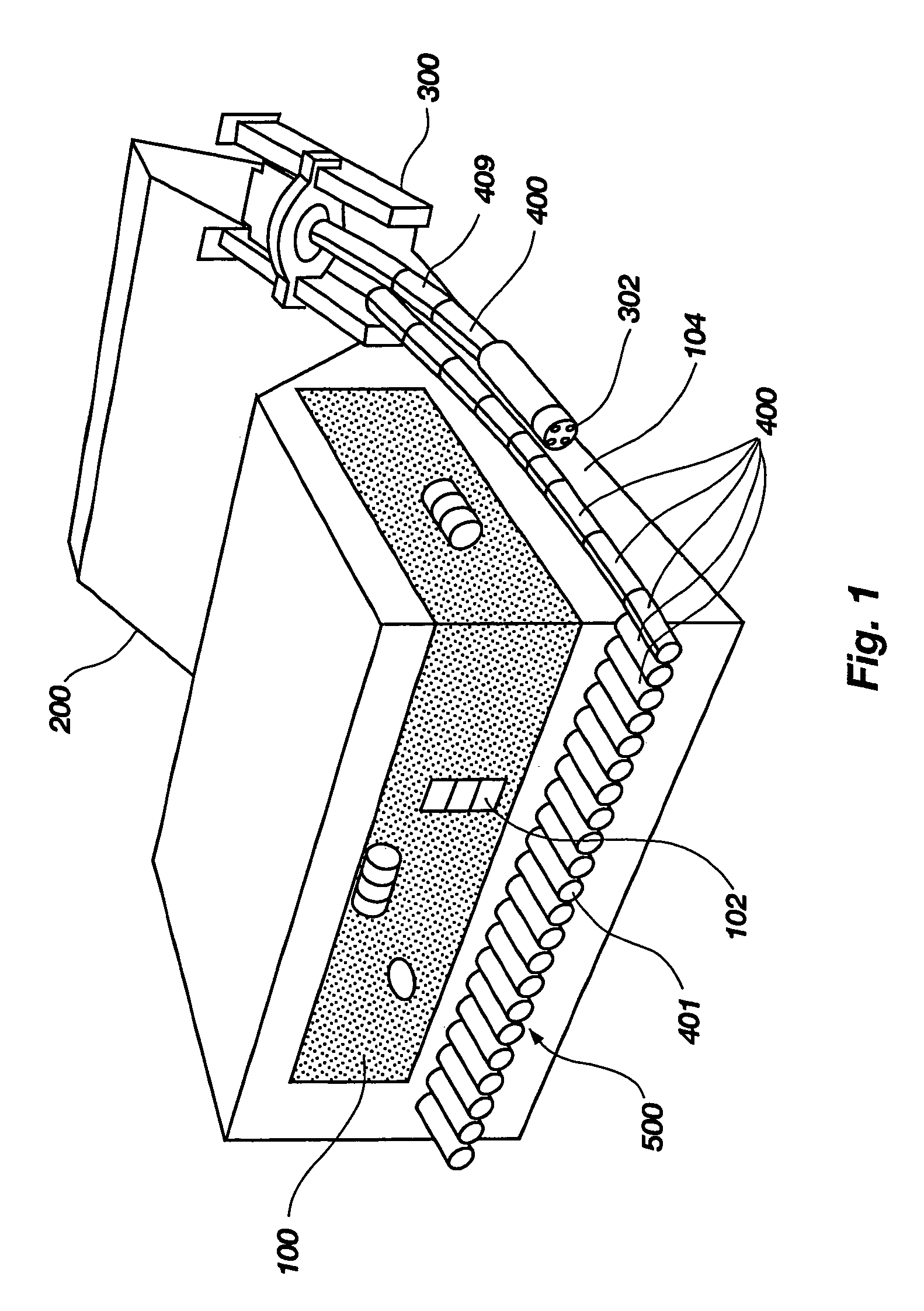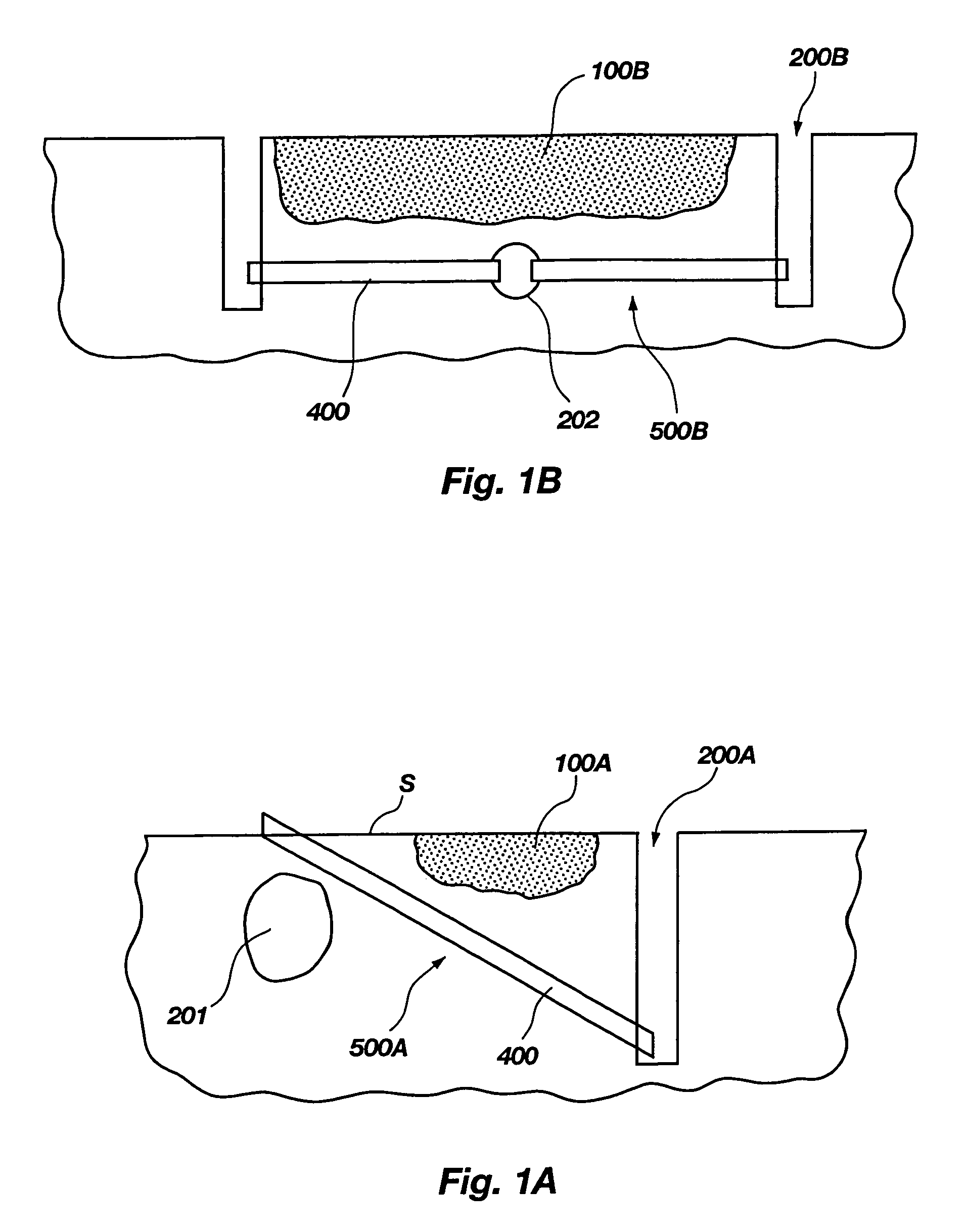Method of in situ retrieval of contaminants or other substances using a barrier system and leaching solutions
a barrier system and in situ retrieval technology, applied in the field of in situ containment and treatment of buried waste, contaminated media, can solve the problems of large volume of buried waste, long-standing management and disposal of various types of waste, and primitive early waste management and disposal systems
- Summary
- Abstract
- Description
- Claims
- Application Information
AI Technical Summary
Benefits of technology
Problems solved by technology
Method used
Image
Examples
first embodiment
[0040]FIG. 1 depicts a zone of interest 100 to be isolated by a barrier 500 useful for practicing methods and processes in accordance with the principles of the present invention. In order to contain zone of interest 100, a trench 200 is first excavated on either side of zone of interest 100 (only one trench is shown) containing buried waste 102. Micro tunneling device 300 is then placed in trench 200. Trench 200 facilitates the placement of micro tunneling device 300, but the creation of trench 200 may be omitted in some embodiments. If trench 200 is excavated, the removed soil, if contaminated, may be disposed of by appropriate and approved methods. Additionally, any soil excavated by tunneling device 300 also be collected, scanned, and disposed of by similar methods.
[0041]One type of micro tunneling device 300 is known as a micro tunnel boring machine, or micro TBM. In a currently preferred embodiment, micro tunneling device 300 comprises an auger head 302 or the like for rotary ...
second embodiment
[0043]FIG. 1A illustrates a barrier 500A used to contain a zone of interest. In the FIG. 1A embodiment, a single trench 200A is excavated on one side of the zone of interest 100A. This may be done where desired, or where a subsurface object 201 prevents the placement of a second trench 200A. The barrier 500A is formed by boring laterally adjacent tunnels and lining with casing sections 400 as described previously herein, only the barrier is formed by running the casing sections 400 from the surface S to the single trench 200A.
[0044]FIG. 1B similarly illustrates yet another embodiment of a barrier 500B that may be used to contain a zone of interest 100B. A central tunnel 202 is bored beneath the zone of interest. Two trenches 200B are excavated on opposite sides of the zone of interest 100B substantially parallel to central tunnel 202 and casings 400B are placed in laterally adjacent tunnels bored from each of the trenches 200B to the central tunnel 202, forming barrier 500B. A singl...
PUM
 Login to View More
Login to View More Abstract
Description
Claims
Application Information
 Login to View More
Login to View More - R&D
- Intellectual Property
- Life Sciences
- Materials
- Tech Scout
- Unparalleled Data Quality
- Higher Quality Content
- 60% Fewer Hallucinations
Browse by: Latest US Patents, China's latest patents, Technical Efficacy Thesaurus, Application Domain, Technology Topic, Popular Technical Reports.
© 2025 PatSnap. All rights reserved.Legal|Privacy policy|Modern Slavery Act Transparency Statement|Sitemap|About US| Contact US: help@patsnap.com



